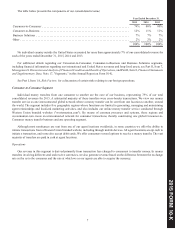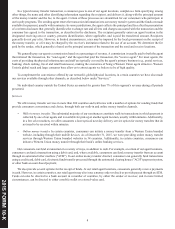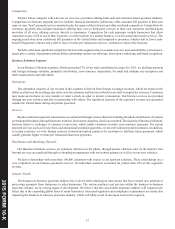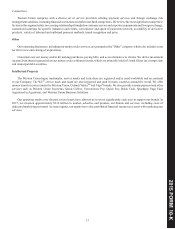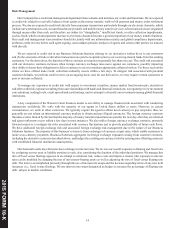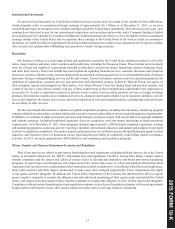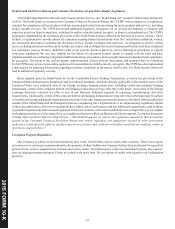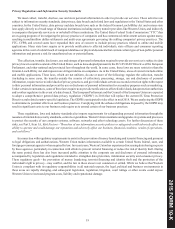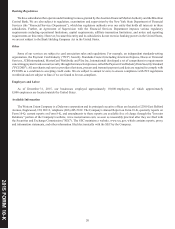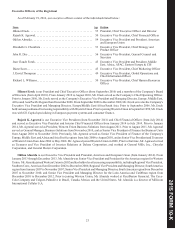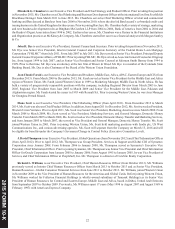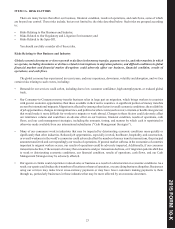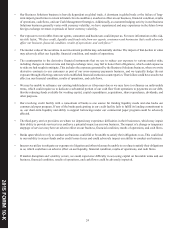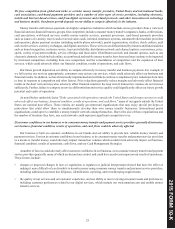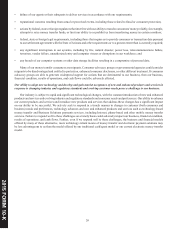Western Union 2015 Annual Report Download - page 119
Download and view the complete annual report
Please find page 119 of the 2015 Western Union annual report below. You can navigate through the pages in the report by either clicking on the pages listed below, or by using the keyword search tool below to find specific information within the annual report.
17
On February 11, 2010, Western Union Financial Services, Inc. ("WUFSI"), a subsidiary of the Company, signed a settlement
agreement ("Southwest Border Agreement"), which resolved all outstanding legal issues and claims with the State of Arizona and
required us to fund a multi-state not-for-profit organization promoting safety and security along the United States and Mexico
border, in which California, Texas and New Mexico are participating with Arizona. As part of the Southwest Border Agreement,
we have made and expect to make certain investments in our compliance programs along the United States and Mexico border
and a monitor (the "Monitor") has been engaged for those programs. We have incurred, and expect to continue to incur, significant
costs in connection with the Southwest Border Agreement. The Monitor has made a number of recommendations related to our
compliance programs, which we are implementing, including programs related to our Business Solutions segment. On January
31, 2014, the Southwest Border Agreement was amended to extend its term until December 31, 2017 (the "Amendment"). The
Amendment imposes additional obligations on the Company and WUFSI in connection with WUFSI’s anti-money laundering
compliance programs and cooperation with law enforcement. See Part I, Item 1A, Risk Factors - "Western Union is the subject of
governmental investigations and consent agreements with or enforcement actions by regulators" and Part II, Item 8, Financial
Statements and Supplementary Data, Note 5, "Commitments and Contingencies," for more information on the Southwest Border
Agreement, including the potential impact on our business.
Regulators worldwide are exercising heightened supervision of money transfer providers and requiring increasing efforts to
ensure compliance. As a result, we are experiencing increasing compliance costs related to customer, agent, and subagent due
diligence, verification, transaction approval, disclosure, and reporting requirements, including requirements to report transaction
data to a greater extent or frequency than previously required, along with other requirements that have had and will continue to
have a negative impact on our business, financial condition, and results of operations.
Government agencies both inside and outside the United States may impose new or additional rules on money transfers
affecting us or our agents or their subagents, including regulations that:
• prohibit transactions in, to or from certain countries or with certain governments, individuals and entities;
• impose additional customer identification and customer, agent, and subagent due diligence requirements;
• impose additional reporting or recordkeeping requirements, or require enhanced transaction monitoring;
• limit the types of entities capable of providing money transfer services, impose additional licensing or registration requirements
on us, our agents, or their subagents, or impose additional requirements on us with regard to selection or oversight of our
agents or their subagents;
• impose minimum capital or other financial requirements on us or our agents and their subagents;
• limit or restrict the revenue which may be generated from money transfers, including transaction fees and revenue derived
from foreign exchange;
• require enhanced disclosures to our money transfer customers;
• require the principal amount of money transfers originated in a country to be invested in that country or held in trust until
they are paid;
• limit the number or principal amount of money transfers which may be sent to or from the jurisdiction, whether by an individual,
through one agent or in aggregate;
• impose taxes or fees on money transfer transactions;
• restrict or limit our ability to process transactions using centralized databases, for example, by requiring that transactions be
processed using a database maintained in a particular country; and
• prohibit or limit exclusive arrangements with our agents and subagents.
201 FORM 10 K
5 -


